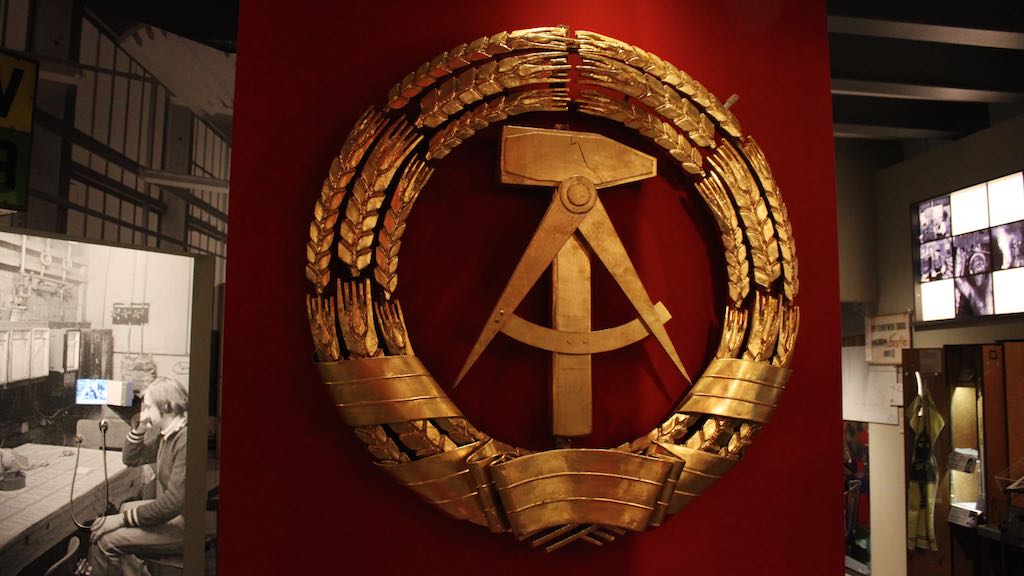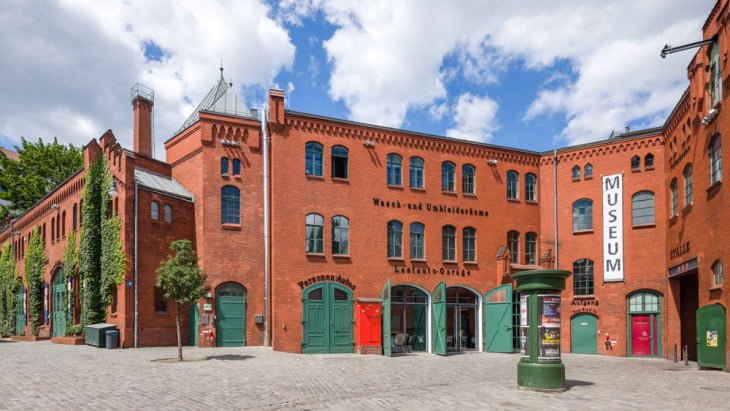
The free Museum in der Kulturbrauerei in Berlin explains everyday life in East Germany (Alltag in der DDR) and the influences of Communist party planning. The museum shows how the Socialist United Party was involved in every aspect of life in East Germany. It also illustrates how this collective approach came into conflict with individual choice and how East Germans, at least in some spheres of life, managed to make their own decisions and show some individual liberties. This museum should not be confused with the DDR Museum on the banks of the Spree across from Museums Island.
The Museum in der Kulturbrauerei
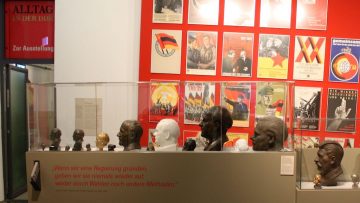 The name of the Museum in der Kulturbrauerei is rarely translated as it could lead to confusion and claims of false advertising. It literally means museum in the cultural brewery, as it is located in a beautifully restored late 19th-century brewery building. This is probably the best example of an industrial building complex from the Kaiser era near central Berlin. However, beer brewing stopped in 1967 – the museum has nothing to do with beer and there are no free samples after a visit.
The name of the Museum in der Kulturbrauerei is rarely translated as it could lead to confusion and claims of false advertising. It literally means museum in the cultural brewery, as it is located in a beautifully restored late 19th-century brewery building. This is probably the best example of an industrial building complex from the Kaiser era near central Berlin. However, beer brewing stopped in 1967 – the museum has nothing to do with beer and there are no free samples after a visit.
The name of the permanent exhibition – DDR in der Alltag / Daily Life in the GDR – is a much better description of what the museum is about. It covers the basic aspects of living and working in the former East Germany with special emphasis on how the dictatorship attempted to plan even the most basic elements of living. It is not a museum on the general history of East Germany or the end of the Communist rule. These aspects are better covered elsewhere – see some suggestions at the bottom of the article.
Everyday Life in the GDR
 The permanent exhibition “Alltag in der DDR / Daily Life in the GDR” consists of around 800 original objects displayed in the two large rooms of the museum.
The permanent exhibition “Alltag in der DDR / Daily Life in the GDR” consists of around 800 original objects displayed in the two large rooms of the museum.
The items are grouped according to four broad themes: the political control by the SED Party, living in a collective, consumption and shortages, as well as attempts to withdraw into a private sphere with less state interference.
The Communist Dictatorship of the GDR
 In the German Democratic Republic (GDR / DDR / Deutsche demokratische Republik), all areas of life were strongly influenced by the ruling Socialist Unity Party (SED). The SED took its Marxist-Leninist views directly from the lead of the Soviet Union and tried to make East Germany an agricultural and industrial state with strict control by the party. The military and other state security apparatus played a major role in keeping the party in control.
In the German Democratic Republic (GDR / DDR / Deutsche demokratische Republik), all areas of life were strongly influenced by the ruling Socialist Unity Party (SED). The SED took its Marxist-Leninist views directly from the lead of the Soviet Union and tried to make East Germany an agricultural and industrial state with strict control by the party. The military and other state security apparatus played a major role in keeping the party in control.
 Every sphere of life was influenced by the Party: it decided on work, education, where people lived, culture and entertainment. Opposition to the Party was not tolerated – dissidents where persuaded with punishments, minor harassment, refusal of “privileges” or even long jail sentences.
Every sphere of life was influenced by the Party: it decided on work, education, where people lived, culture and entertainment. Opposition to the Party was not tolerated – dissidents where persuaded with punishments, minor harassment, refusal of “privileges” or even long jail sentences.
The system of state security surveillance was incredibly comprehensive. Although the state was rotten to the core by 1989, it remained a wonder that the regime collapsed without bloodshed.
Living in the Collective
 As in the Soviet Union, the SED placed huge importance on creating a system of collectives. These mass organizations and workers’ collectives decided all aspects of daily life, as set out by the political oversight. Education, work, commerce, industry, agriculture, culture and recreation were determined by the collectives.
As in the Soviet Union, the SED placed huge importance on creating a system of collectives. These mass organizations and workers’ collectives decided all aspects of daily life, as set out by the political oversight. Education, work, commerce, industry, agriculture, culture and recreation were determined by the collectives.
It was particularly important to create a feeling of togetherness and solidarity of for examples workers at a factory, or students at a school. Through peer pressure under guidance of the party, it was hoped to create the perfectly docile collective. Work places often had their own daycare system for children of workers to partly assure that mothers could remain in the workforce – in West Germany, women commonly stopped working when getting married or at the latest when starting a family.
After the fall of the Wall, East Germans often claimed to miss the feeling of solidarity that was common in the DDR without remembering how peer-pressure was used to control peoples lives and that many ordinary people were forced to spy and report on friends and neighbors.
Consumption and Shortages
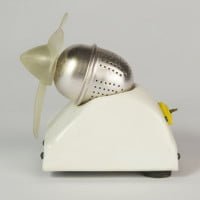
As a planned economy, the communist party had to take responsibility for the supply of all consumer goods. Not surprisingly, shortages were common, as were the oversupply of items not demanded.
Exhibits in the museum show items for daily needs that East Germans could buy from the state-run shops. More interesting are items made through creativity by individuals to make up for the lack of durable goods, or to put some individuality into state sanctioned products and fashions.
Escape into Privacy
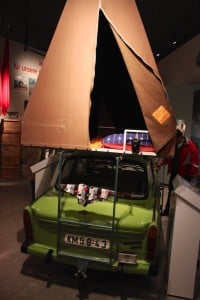 The last major theme shows how people tried to retreat from the political and social controls into their private spheres. Escaping from East Germany all together was for many the impossible dream but it was often possible to withdraw from the controlled society, even if only for a weekend away or an evening spent away from officially sanctioned events with like-minded friends..
The last major theme shows how people tried to retreat from the political and social controls into their private spheres. Escaping from East Germany all together was for many the impossible dream but it was often possible to withdraw from the controlled society, even if only for a weekend away or an evening spent away from officially sanctioned events with like-minded friends..
Holidays were often planned for the factory or society together but camping – especially with a tent fitted on the roof of a Trabi car – gave to many the occasional trip away from it all. FKK (nudism) was hugely popular in East Germany and its popularity is often attributed to the feeling of freedom it allowed in an otherwise drab society with limited fashion options.
Visiting the Museum in der Kulturbrauerei
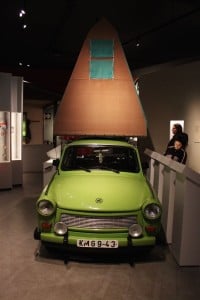 “Everyday Life in the GDR” can be seen in an hour but studying objects in more detail can easily stretch a visit to two hours or more. The video material alone in the museum covers around 18 hours.
“Everyday Life in the GDR” can be seen in an hour but studying objects in more detail can easily stretch a visit to two hours or more. The video material alone in the museum covers around 18 hours.
Most items are fully described in both English and German, although the museum is sometimes criticized for not placing all items in full context or explaining all events clear enough. It assumes some pre-knowledge of the DDR and its regime but at least the displays are not dumbed down to elementary school level.
Looking at some of the archaic items, it is also worth keeping in mind that the DDR ended in 1990. The DDR, founded in 1949, rapidly fell behind the West, especially during the 1980s but it would be a mistake to compare items from then with current products. In pre-electronic era spying, the East was on par or even ahead of the West.
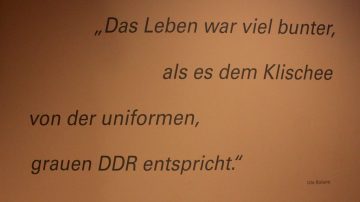 A quote near the entrance to the museum is also worth noting: “Life was more colorful than the cliché of grey GDR uniforms.” The museum succeeded well in showing both the oppressive communist regime but also how people brought color and joy into their lives. However, the museum does not relapse into “Ostalgie” or pretending that life in the East was better than it is now in a united Germany.
A quote near the entrance to the museum is also worth noting: “Life was more colorful than the cliché of grey GDR uniforms.” The museum succeeded well in showing both the oppressive communist regime but also how people brought color and joy into their lives. However, the museum does not relapse into “Ostalgie” or pretending that life in the East was better than it is now in a united Germany.
The Museum in der Kulturbrauerei is similar, but also different, from the very popular DDR Museum on Unter den Linden across the Spree River from the Berliner Dom and Museums Island.
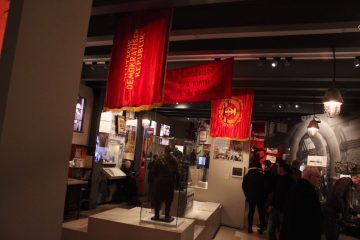 The DDR Museum is probably easier to enjoy for visitors with limited interest in East Germany while the Museum in der Kulturbrauerei comes with more formal academic credentials, as it is run by the Stiftung Haus der Geschichte der Bundesrepublik Deutschland (Foundation Home of the History of the Federal Republic of Germany). Both are worth seeing but I’m more likely to make a return visit to the Kulturbrauerei (and not only because admission is free).
The DDR Museum is probably easier to enjoy for visitors with limited interest in East Germany while the Museum in der Kulturbrauerei comes with more formal academic credentials, as it is run by the Stiftung Haus der Geschichte der Bundesrepublik Deutschland (Foundation Home of the History of the Federal Republic of Germany). Both are worth seeing but I’m more likely to make a return visit to the Kulturbrauerei (and not only because admission is free).
Visitors Information – Museum in der Kulturbrauerei
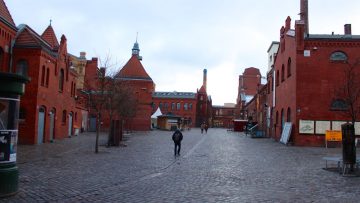 The Museum in der Kulturbrauerei, Knaackstrasße 97, Gebäude 6.2, 10435 Berlin, is open Tuesday to Sunday from 10 am to 6 pm, closing at 8 pm on Thursdays.
The Museum in der Kulturbrauerei, Knaackstrasße 97, Gebäude 6.2, 10435 Berlin, is open Tuesday to Sunday from 10 am to 6 pm, closing at 8 pm on Thursdays.
Admission is free.
The museum is located slightly to the north of the Mitte city center of Berlin but easily reached on public transportation. It is a short block from the Eberwalder Straße U-Bahn station (U2 from amongst others Alexander Platz, Stadtmitte and Potsdamer Platz) and tram stop. Tram M10 gives easy access to the Berlin Wall sights at Bernauer Straße near the Nordbahnhof.
Berlin Museums on the Divided Germany
 Berlin has several museums and documentation centers dealing with different aspects of the division of Germany into West and East Germany between 1945/49 and 1989/90. A few of the larger ones:
Berlin has several museums and documentation centers dealing with different aspects of the division of Germany into West and East Germany between 1945/49 and 1989/90. A few of the larger ones:
- DDR Museum – a hugely popular, and easy to enjoy, museum on life in the former East Germany. The museum is very conveniently located across the Spree River from the Berliner Dom and Museums Island.
- Bernauer Straße – a documentation and information center along the longest surviving section of the Berlin Wall near Nordbahnhof. If you have time to see only one section of the wall, make it this one but several other Berlin Wall remnants are within easy reach of central Berlin.
- Mauermuseum Haus am Checkpoint Charlie – a large museum on the division of Germany and how people fled across the border. Newer exhibition are on political oppression and human right abuses worldwide. Long opening hours make up for the steep admission.
- Tränenpalast – by the same foundation at the Kulturbraurei – is in the former departures hall for travelers from East to West Berlin. It deals with all aspects of legal border crossings and traveling during the Cold War. Admission is free and transportation easy as it is directly next to Friedrichstraße station.
- German History Museum – a tour de force on German history that can take days to see in detail. Skip through the earlier periods if the 20th century is of most interest.
The best museum on events leading to the collapse of the East German regime is not in Berlin but in Leipzig. The Zeitgeschictliches Forum Leipzig – also by the foundation running the Tränenpalast and Kulturbrauerei – has a vast exhibition on the resistance against the East German regime and the peaceful revolution that ended the division of Germany. Also worth seeing in Leipzig is the Museum in der Runden Ecke that deals with the Stasi and how the state secret police spied on citizens – often with the help of neighbors and even family members.
